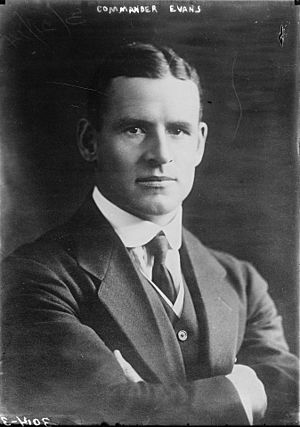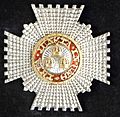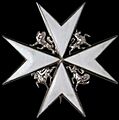Edward Evans, 1st Baron Mountevans facts for kids
Quick facts for kids
The Lord Mountevans
|
|
|---|---|
 |
|
| Nickname(s) | "Teddy" |
| Born | 28 October 1880 London, England |
| Died | 20 August 1957 (aged 76) Gålå, Norway |
| Allegiance | United Kingdom |
| Service/ |
Royal Navy |
| Years of service | 1896–1941 |
| Rank | Admiral |
| Commands held | Nore Command (1935–39) Africa Station (1933–35) HM Australian Squadron (1929–31) HMS Repulse (1926–27) British Antarctic Expedition (1913) |
| Battles/wars | First World War Second World War |
| Awards | Knight Commander of the Order of the Bath Distinguished Service Order Knight of the Order of St John Sea Gallantry Medal Mentioned in Despatches Grand Officer of the Order of the Tower and Sword (Portugal) Commander of the Royal Norwegian Order of St Olaf War Medal (Norway) Commander of the Order of the Belgian Crown (Belgium) Officer of the Order of Leopold (Belgium) Officer of the Legion of Honour (France) Croix de Guerre (France) Knight of the Military Order of Savoy (Italy) Navy Cross (United States) |
| Other work | London Regional Commissioner for Civil Defence (1939–45) Special Naval Attaché to Norway (1940) |
Admiral Edward Ratcliffe Garth Russell Evans, 1st Baron Mountevans, known as "Teddy", was a brave officer in the Royal Navy and a famous Antarctic explorer. He was born in London, England, on October 28, 1880, and passed away in Norway on August 20, 1957.
Evans is best known for being the second-in-command on Robert Falcon Scott's challenging Terra Nova expedition to the South Pole (1910–1913). He also became a hero during the First World War for his actions in a sea battle. Later in his life, he was given the special title of Baron Mountevans.
Contents
Who Was Admiral Edward Evans?
Edward Evans, or "Teddy" as his friends called him, was a remarkable person who led a life full of adventure and service. He started as a young boy who sometimes got into trouble. But he grew up to become a highly respected naval officer and explorer. His journey took him from the busy streets of London to the icy, unknown lands of Antarctica. He also fought bravely in two World Wars.
Edward was born in London in 1880. As a child, he and his brothers were quite adventurous. They sometimes explored far into the city, even getting into minor scrapes. When he was ten, Edward went to Merchant Taylors' School. He was expelled a year later for fighting and skipping classes.
After this, he was sent to a special school for "troublesome boys." Here, he learned to be more disciplined. He enjoyed the countryside and responded well to the teaching. Later, at another school, he became a prefect, which helped him learn self-control. He became a top student, winning many awards.
Edward dreamed of a career at sea. He joined the training ship HMS Worcester in 1895. Despite facing bullying, he worked hard and became a skilled cadet. He eventually earned a coveted spot as a cadet in the Royal Navy.
His early naval career began in 1897 on HMS Hawke. He faced a serious illness, brucellosis, which made him very sick. After recovering, he became very focused on physical fitness. He would walk for miles and swim for hours, staying fit for many years. He later met Robert Falcon Scott for the first time while serving on HMS Majestic.
Adventures in Antarctica
Edward Evans was fascinated by the frozen continent of Antarctica. He took part in two major expeditions there, facing extreme cold and danger.
First Trip to the South Pole (1902-1904)
In 1901, the famous Discovery Expedition, led by Scott, sailed to Antarctica. Edward Evans saw a chance for adventure. He joined the relief ship, SY Morning, in 1902. This ship was sent to find and help the Discovery if it got into trouble.
The Morning sailed through rough seas to the Ross Sea. They found a message from the expedition, leading them to McMurdo Sound. Here, Evans was among the first to meet the Discovery crew. Scott, Shackleton, and Wilson returned from their journey inland. They were sick with scurvy and snow-blindness, but they had reached a new "Farthest South" point. Evans was promoted to lieutenant during this time.
In 1903, the Morning returned to resupply the Discovery. The Discovery was stuck in ice. In 1904, Evans helped blast a channel through eight miles of ice. This freed the Discovery just before a big storm. Scott named Mount Evans after him to honor his hard work.
Scott's Famous Expedition (1910-1913)
In 1909, Evans decided to organize his own Antarctic expedition. However, when Scott announced his new expedition to the South Pole, Evans changed his plans. He joined Scott's Terra Nova expedition as second-in-command. He even brought a lot of sponsorship from Cardiff, so Scott named Cardiff the home port of the expedition ship, Terra Nova.
The expedition landed at Cape Evans on Ross Island in January 1911. Evans helped set up supply depots for the polar journey. He was in charge of the Motor Party, using motor sledges to carry supplies. But the sledges broke down early on. Evans and his team had to pull heavy sledges themselves.
As they pushed south, Evans's team became very tired. On January 3, Scott told Evans that he would not continue to the Pole. Evans was disappointed but understood. He, Lashly, and Crean began the difficult journey back.
On the return trip, Evans became very ill with scurvy. This is a serious illness caused by not getting enough Vitamin C. He was in severe pain and could no longer walk. Lashly and Crean bravely pulled him on the sledge. They refused to leave him behind, even when Evans told them to. Crean walked eighteen hours alone to get help. Evans was rescued and nursed back to health.
After returning to England, Evans met King George V. He was promoted to commander. He then commanded the Terra Nova on its final relief journey. It was then that he learned of the tragic death of Scott's polar party. Evans took charge of the expedition's final departure from Antarctica.
Evans's wife, Hilda, sadly passed away in 1913 while traveling back to England. She was buried in France.
War Hero: "Evans of the Broke"
Edward Evans had a very successful naval career, especially during the First World War.
On April 20, 1917, Evans was commanding the destroyer HMS Broke. He was on patrol near Dover. His ship, along with HMS Swift, fought six German destroyers. This battle became known as the Battle of Dover Strait.
During the intense fight, HMS Swift sank one German ship. Then, the Broke bravely rammed another German destroyer, G42. The two ships got stuck together. There was hand-to-hand fighting on the Broke's deck. Eventually, the Broke broke free, and the German ship sank.
This heroic action made Evans famous. He was immediately promoted to captain and received the DSO. The British newspapers celebrated him as "Evans of the Broke."
In 1916, Evans married Elsa Andvord from Norway. They had two sons, Richard and Edward.
A Life of Service and Rescue
After the First World War, Evans continued his impressive naval career. He was known for his bravery and leadership.
While commanding HMS Carlisle in Asia, Evans performed another heroic rescue. He saved 200 people from the sinking ship SS Hong Moh. He even swam to the sinking ship to help direct the rescue efforts. For his actions, he received several awards for life-saving.
He was promoted to rear-admiral in 1928. He commanded the Royal Australian Navy Fleet. In 1932, he became a vice-admiral. He also served as commander-in-chief of the Africa Station. From 1935 to 1939, he was Commander-in-Chief, The Nore, a very important position in the Royal Navy. He became a full admiral in 1936.
Evans received many honors, including being made a Knight Commander of the Order of the Bath (KCB) in 1935.
Later Life and Legacy
When the Second World War began in 1939, Evans was called back to duty. He played a key role in Civil Defence for London. This meant helping to protect the city and its people during air raids. He officially retired from the Navy in 1941.
In 1945, he was given the special title of Baron Mountevans. This meant he became a Peer and could sit in the House of Lords, which is part of the UK Parliament.
Even in retirement, Evans continued to be involved in important events. In 1947, he was rescued from a shipwreck off the coast of Ireland. He also chaired a committee that created the official rules for professional wrestling in the UK. These rules are still known as the "Admiral-Lord Mountevans rules."
Admiral Edward "Teddy" Evans passed away in Norway on August 20, 1957. He is buried in Oslo. His life showed incredible courage, leadership, and dedication to helping others, whether exploring icy lands or saving lives at sea.
Images for kids





